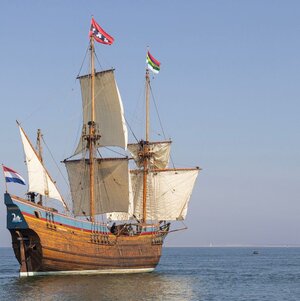Hello ,
There are quite a few very good research articles on shipbuilding here.
It's very impressive and well worth reading.
I am particularly fascinated by Dutch, northern European shipbuilding of the 17th century.
There is also quite a lot of contemporary source material available, be it building contracts, extensive writings or archaeological finds.
This forum brings together people with the highest level of expertise, who thankfully share their knowledge with us.
But what did the shipbuilding in question look like in the 16th century? The development of hull construction in particular in the second half would be of great interest to me.
Is there any source material on this, or where can I find it?
Thank you very much for your information
Bela
There are quite a few very good research articles on shipbuilding here.
It's very impressive and well worth reading.
I am particularly fascinated by Dutch, northern European shipbuilding of the 17th century.
There is also quite a lot of contemporary source material available, be it building contracts, extensive writings or archaeological finds.
This forum brings together people with the highest level of expertise, who thankfully share their knowledge with us.
But what did the shipbuilding in question look like in the 16th century? The development of hull construction in particular in the second half would be of great interest to me.
Is there any source material on this, or where can I find it?
Thank you very much for your information
Bela




